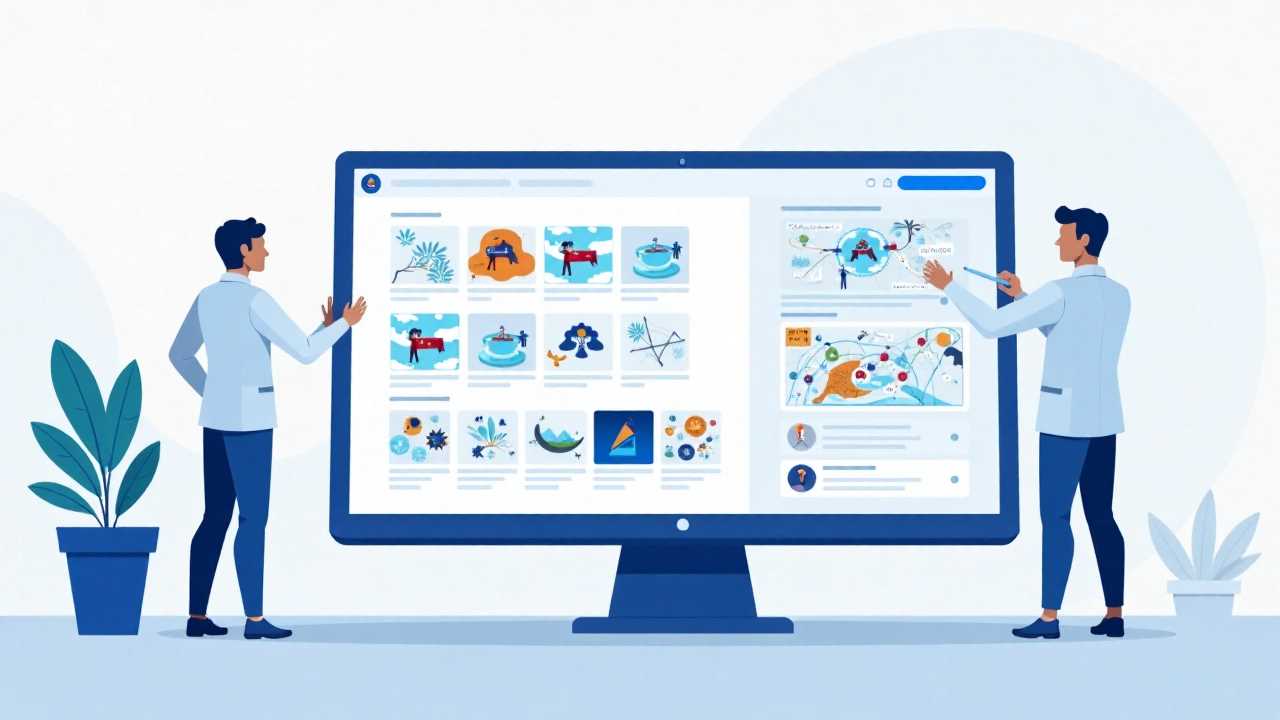
Understanding Digital Storyboarding
Digital Storyboarding is a powerful tool that allows creators to visualize their ideas and concepts before they are fully realized. It serves as a blueprint for various forms of media, including films, animations, and video games. By utilizing digital illustration techniques, artists can create detailed and dynamic visual narratives that effectively communicate their stories. This process not only aids in concept development but also streamlines the production workflow, ensuring that all team members are aligned with the vision.
The Role of Digital Illustration in Storyboarding
Digital illustration plays a pivotal role in the storyboarding process. It allows artists to sketch out scenes quickly and efficiently, using art software that offers a range of tools for creating high-quality visuals. These illustrations can include character designs, backgrounds, and key action sequences. By employing techniques such as layering and digital painting, illustrators can produce rich, textured images that bring their narratives to life. The ability to manipulate these illustrations digitally also means that changes can be made swiftly, which is essential in the iterative process of storytelling.
Crafting a Compelling Visual Narrative
A compelling visual narrative is built on strong storytelling principles. When creating a storyboard, we must consider the emotional arc of the story, the pacing, and the visual flow from one scene to the next. Each frame should contribute to the overall narrative, guiding the audience's attention and evoking the desired emotional response. By integrating animation techniques, such as timing and movement, we can enhance the storytelling experience. This not only captivates the audience but also creates a more immersive experience that resonates on a deeper level.
Concept Development: From Idea to Visual
Concept development is a critical phase in the digital storyboarding process. It involves brainstorming and refining ideas before translating them into visual form. This stage often includes creating mood boards, character sketches, and rough drafts of scenes. Using art software, artists can experiment with different styles and compositions, allowing for a more flexible and creative approach to storytelling. The goal is to establish a clear vision that can be communicated effectively through the storyboard, ensuring that all elements work harmoniously together.
Animation Techniques: Breathing Life into Storyboards
Incorporating animation techniques into storyboarding can significantly enhance the narrative. Techniques such as keyframing, tweening, and motion graphics allow artists to visualize how scenes will transition and how characters will move. This not only aids in planning the animation process but also provides a clearer understanding of how the final product will look. By creating animated storyboards, we can test the timing and pacing of scenes, making necessary adjustments before the actual animation begins.
The Creative Process: Collaboration and Feedback
The creative process in digital storyboarding is inherently collaborative. Artists, writers, and directors must work together to ensure that the storyboard aligns with the overall vision of the project. Open communication and regular feedback are essential during this phase. Each team member brings unique perspectives and expertise, contributing to a more refined and cohesive narrative. Feedback sessions allow for the identification of potential issues early on, enabling adjustments to be made efficiently. This iterative process fosters creativity and ensures that the storyboard evolves to meet the project's goals.
Tools and Software for Digital Storyboarding
The availability of advanced digital tools and software has revolutionized the storyboarding process. Programs like Adobe Photoshop, Storyboard Pro, and Blender provide artists with an extensive array of features to create professional-grade storyboards. These tools often include templates, timeline functionalities, and integration with animation software, streamlining the workflow. Additionally, cloud-based platforms allow for seamless collaboration, enabling team members to work together in real time, regardless of their location.
Benefits of Digital Storyboarding
Digital storyboarding offers numerous advantages over traditional methods. One of the most significant benefits is the ability to make instant revisions, saving both time and resources. The digital medium also allows for greater experimentation with visual styles, layouts, and transitions. Moreover, digital storyboards can be easily shared and archived, making them an invaluable resource for ongoing and future projects. This flexibility and efficiency make digital storyboarding an indispensable tool in modern media production.
Challenges in Digital Storyboarding
Despite its many benefits, digital storyboarding comes with its own set of challenges. Learning to use complex software can be daunting for beginners, and achieving a balance between artistic vision and technical requirements often requires experience and skill. Additionally, maintaining clear communication among team members is crucial, as misunderstandings can lead to inconsistencies in the storyboard. Addressing these challenges requires a combination of proper training, effective project management, and a willingness to adapt.
Future Trends in Digital Storyboarding
As technology continues to advance, digital storyboarding is becoming increasingly sophisticated. The integration of AI tools, for example, is allowing artists to automate repetitive tasks, such as generating basic scene layouts or predicting motion paths. Virtual reality (VR) and augmented reality (AR) are also emerging as transformative tools, enabling creators to develop immersive storyboards that can be experienced in 3D. These innovations are expanding the possibilities of storytelling, pushing the boundaries of what can be visualized and communicated through storyboarding.
Digital storyboarding is more than just a planning tool—it’s a creative medium that bridges the gap between ideas and their realization. By leveraging the power of digital illustration, animation techniques, and collaborative tools, creators can craft compelling visual narratives that resonate with audiences. While challenges exist, the continued evolution of technology promises to make digital storyboarding even more accessible and impactful in the years to come.
 Digital Art InstructionDIY Infographics DesignMobile Game ArtworkPersonalized Logo Design3D AnimationeBook Covers DesignPrivacy PolicyTerms And Conditions
Digital Art InstructionDIY Infographics DesignMobile Game ArtworkPersonalized Logo Design3D AnimationeBook Covers DesignPrivacy PolicyTerms And Conditions
